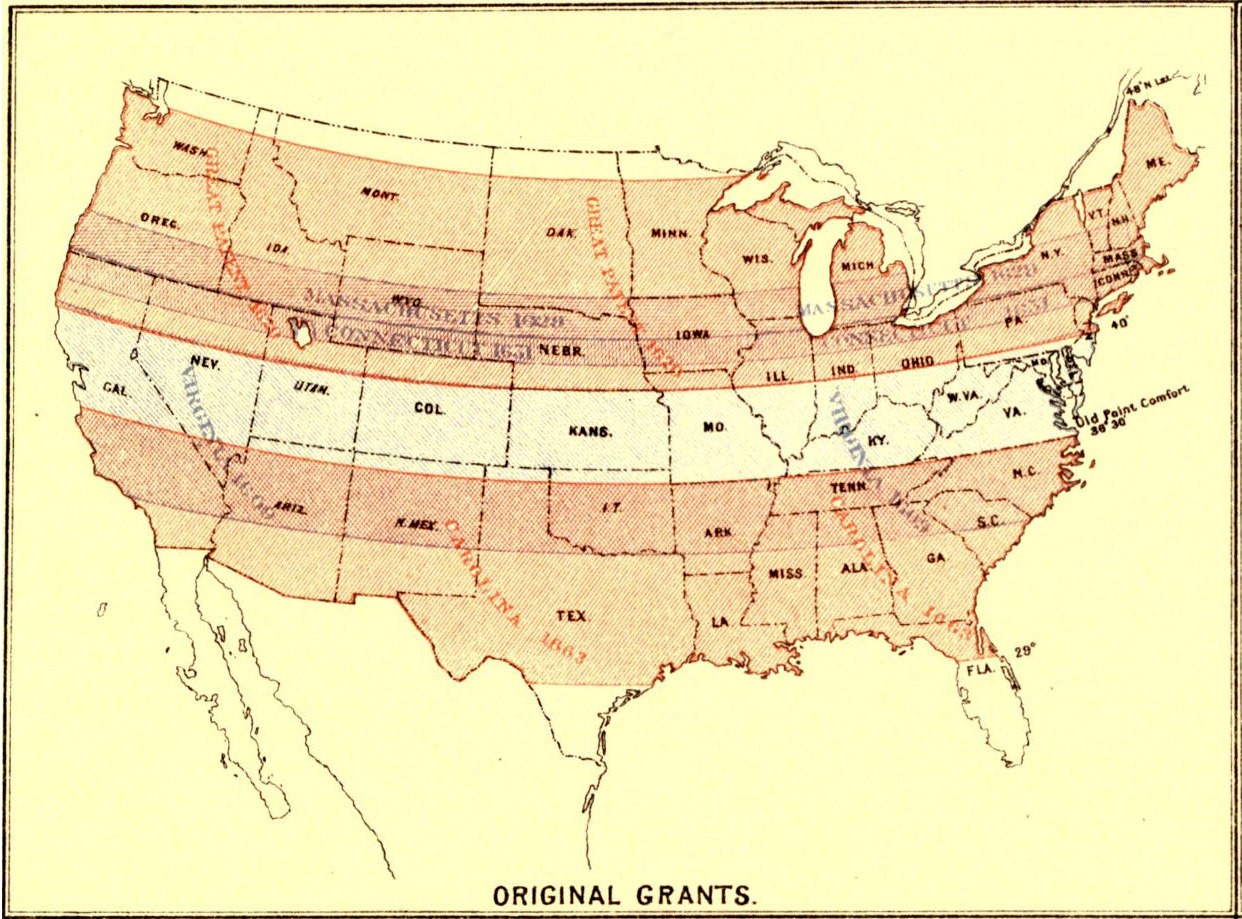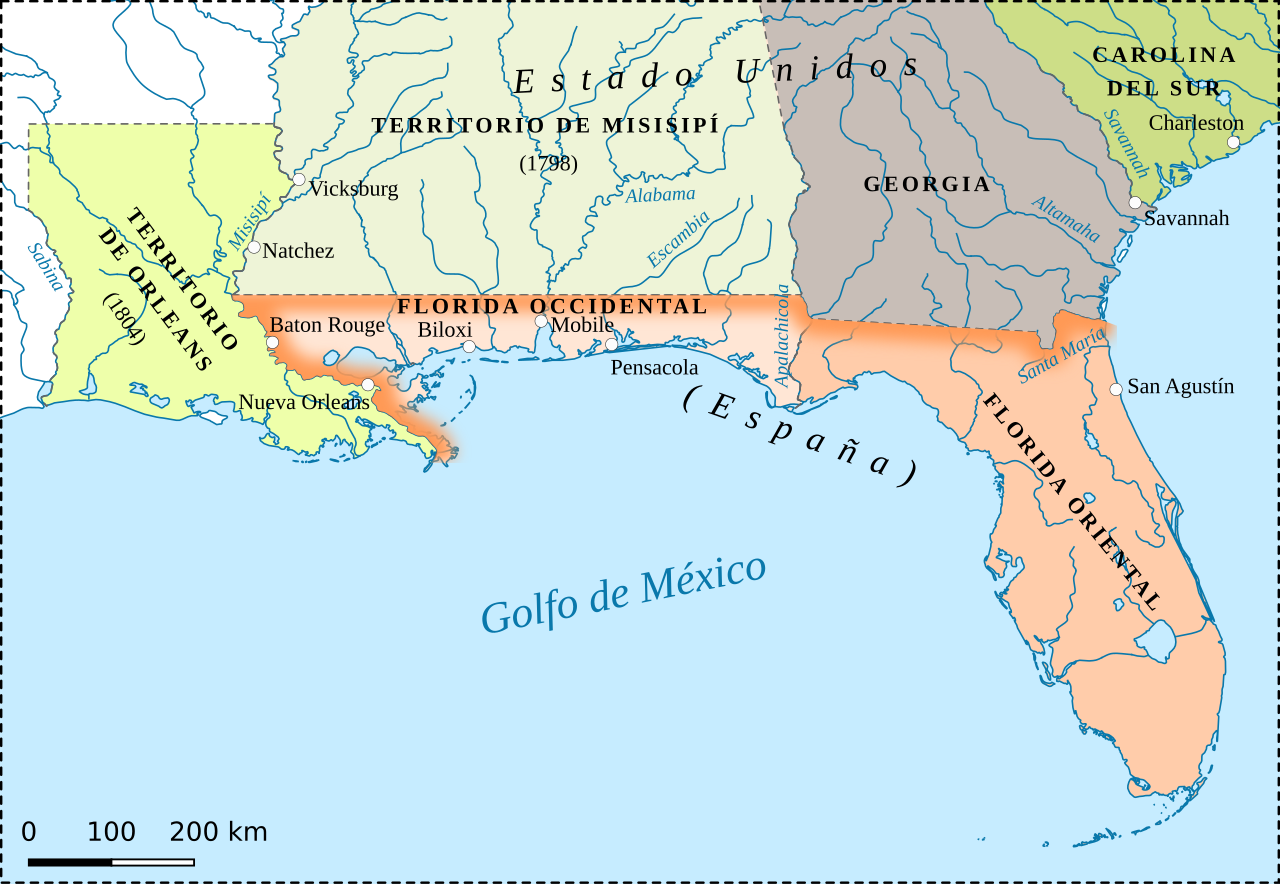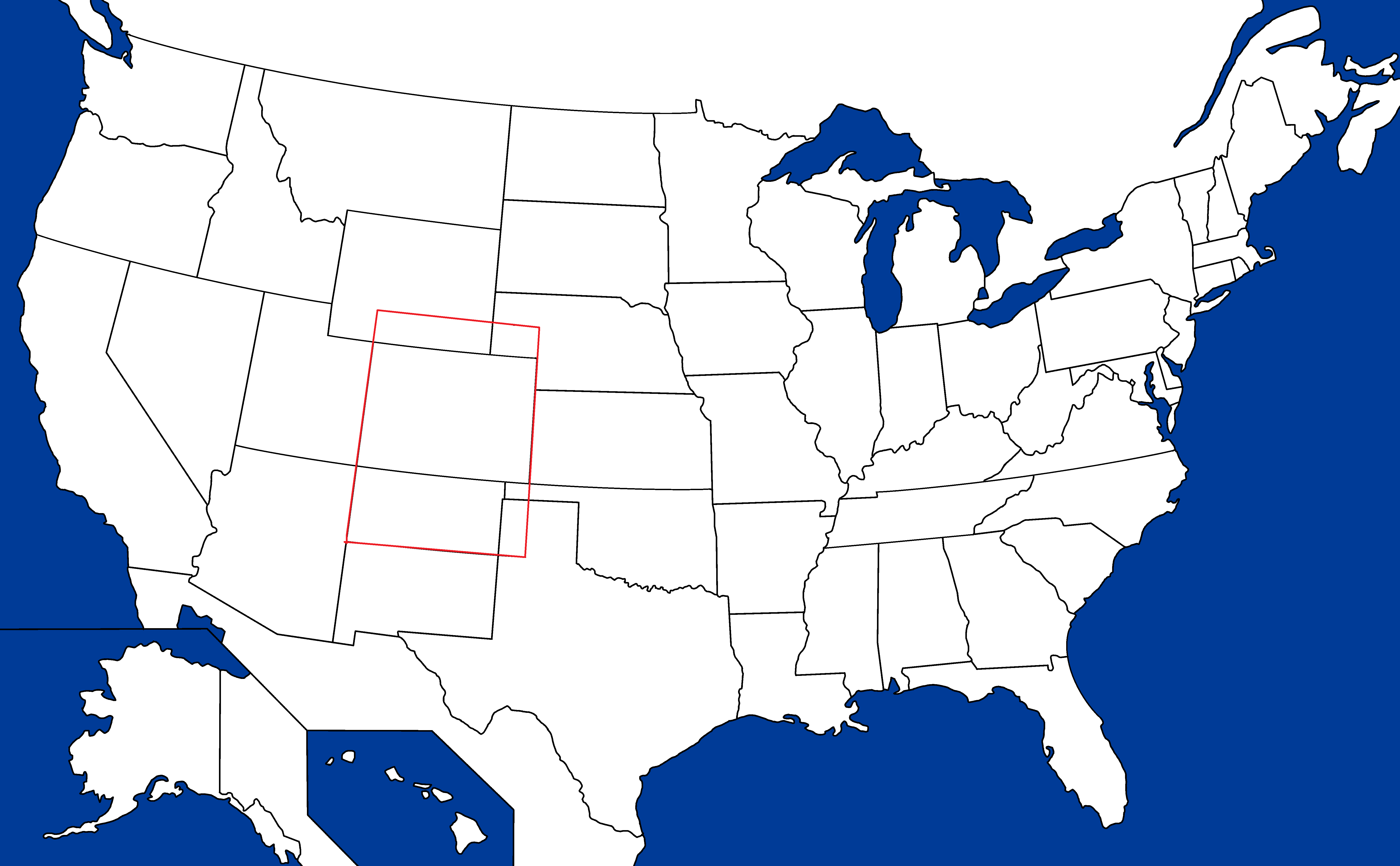You ever looked at Oklahoma and thought, huh? What’s up with that long thin bit sitting on top of Texas like that?
Or Maryland, the state that’s basically broken in two pieces – what happened there? Why does Florida go so far west despite mostly being content as America’s wang, and why does Alaska have that silly little bit of Canada included in its boundaries?
These weird extensions of states – the thinner bits that jut out from the main territories – are called panhandles, for reasons which are fairly obvious if you look at Oklahoma on a map. There are nine in total – and each one has a weird and often slightly ridiculous story behind it.
Inter-state scuffles: Connecticut, Maryland
Some of the US’s panhandles go way, way back. Connecticut’s weird little hyper-expensive rectangle, for example, originates from 1662, when “King Charles II granted Connecticut all the land bounded on the east by Narragansett Bay, on the north by the Massachusetts Colony, on the south by Long Island Sound, and on the west by, as had become the tradition, the Pacific Ocean,” explained Mark Stein in his 2012 book How The States Got Their Shapes.
There was just one problem with that: the existence of New York. If you’re not aware, the Empire State is one of, oh, lets say “several” states that sit in between Connecticut and the West Coast, and they weren’t particularly happy at being told they were technically just West Connecticut.

What a workable solution!
AnonymousUnknown author, from an original in Scribner’s Historical Atlas, published by Charles Scribner’s Sons, engraved by William & Alexander Keith Johnston., Public domain, via Wikimedia Commons
To that end, “The two colonies commissioned a boundary survey in 1683,” Stein wrote. “The problem was providing New York with the agreed upon 20-mile [32-kilometer] buffer east of the Hudson while at the same time preserving for Connecticut its towns of Greenwich and Stamford. The solution turned out to be a panhandle.”
Maryland’s panhandle is almost as old, and owes its existence to a hilariously old-timey series of misunderstandings. The province’s original 1632 charter defined its southern boundaries mostly by way of the Potomac River – which would be fine, except that “at the time […] no one knew exactly where the western reaches of the Potomac were,” Stein explained.
It wouldn’t have been so bad, had Maryland not been near-constantly feuding with Pennsylvania over where the border between the two states should be. Eventually, a compromise was reached, leaving Maryland with its precariously attached panhandle.
“The mishap-prone Lord Baltimore agreed to a northern border 15 miles [24 kilometers] south of Philadelphia,” Stein wrote. “The point in western Maryland where the state almost breaks in two is the result of the Potomac flowing in a northerly arc that nearly touches that relocated border.”
Treaties and Tussles: Texas, Florida, Alaska
England wasn’t the only European country laying claim to the Americas back in the day. At least two states – Texas and Florida – owe their strange shapes to the Adams-Onís Treaty of 1819, which formally defined the boundary between the US and New Spain.
Technically, the treaty was only in full effect for 183 days, but its influence can be seen to this day: the treaty “specified that the US/Spanish boundary continued westward along the Red River to 100° W longitude, at which point it turned due north to the Arkansas River,” explained Stein. “Today, what remains of this line due north is the eastern edge of the Texas panhandle.”
This was also the treaty that ceded Florida to the US – though the curious shape of the state’s panhandle is actually due more to disputes than to diplomacy. When Spain first established La Florida, it was huge – as one of the first major European land claims in the Americas, there basically wasn’t anybody else to challenge the boundaries they chose.
But of course, that didn’t last, and before long both French and English colonies were knocking on Florida’s door – if not kicking it down and moving right on in. The creation of Georgia set a limit on how far north Florida could extend, while French Louisiana enclosed it on the west with the Mississippi River.

East and West Florida in 1810, before the US owned it – legally or otherwise.
Florida’s panhandle today is even smaller than even that, though – and that’s because of a little thing called the War of 1812. “Spain, no longer the military power it had been, allied itself to British interests,” Stein wrote. “In response, the United States took this opportunity to acquire greater access to the Gulf and control of both banks of the Mississippi by seizing two tracts of Spanish Florida.”
“When the Mississippi Territory was divided to create the states of Alabama and Mississippi, this land that had been Florida was split and became the tabs at the bottom of Alabama and Mississippi.”
Alaska’s panhandle – that tiny bit that sneaks down into Canada’s mainland – is similarly the result of some international compromising. Famously Russian before it was American, Alaska initially reached as far south as the 51st parallel – virtually as far down as Vancouver.
Or, at least, that’s what the Russians claimed. The UK and US weren’t so sure they wanted the Russians having such a large land claim right on their doorstep, and so, less than a decade after 1812, they put their differences aside and teamed up to counter-claim the territory.
In the end, they won – mostly. Russia maintained a claim to a strip along the coastline, forming the long arc of Alaska’s southern border.
Alaska, initially, had been seized by the Russian-American company – “a fur trading corporation operating under a charter from the czar,” Stein explained. The reason they wanted that lovely long arc along the bottom of the colony was the presence of the barrier islands contained within: they “create safe harbors for ships and fishing boats,” Stein wrote, “and those snug harbors are what the Russians most wanted.”
Brazen theft: Nebraska
Last on the current list is Nebraska, whose chunky expanse to the west barely seems to count as a panhandle when put next to states like Oklahoma or Maryland. In fact, given the size and shape of both Nebraska and the states surrounding it, you could be forgiven for thinking its irregular shape is less of a “panhandle” and more “did Colorado like, eat a corner of your state?”
If you were to ask Nebraska if that were the case, by the way, the answer would actually be, “yeah, basically.” In 1858, gold was discovered in what’s now Colorado, and – as is traditionally the case – tens of thousands of prospectors swarmed into the area looking to cash in. Technically, most of the land was Kansas Territory back then, but Kansas was a little busy at the time trying to decide whether slavery was bad or not.
What’s a state-sized population of prospectors to do? In best Yosemite Sam fashion, they staged a land grab, creating the Territory of Jefferson in 1859 and declaring its borders to be between the 42nd and 35th parallels north to south, and the 109th and 102nd meridians west to east.

The original proposed border of Jefferson Territory. Ish.
While Congress eventually lopped a bit off of the top and bottom of the resulting area, they were fine with its horizontal boundaries – even though they technically overlapped with the south-west corner of Nebraska.
Rather than fight a bunch of rowdy gold diggers on it, though, Nebraska gave the land up quietly: “Nebraskans knew that gold mines were not a box of chocolates,” Stein wrote. “The culture of those in the mining community was quite different from that of the earlier, agricultural settlers. And the vast numbers of mining people who flooded into these regions threatened the established power structure.”
“It was thought to be better, perhaps, that they have their own territory.”
Source Link: Some Of The Weird Beefs Behind US State Panhandles